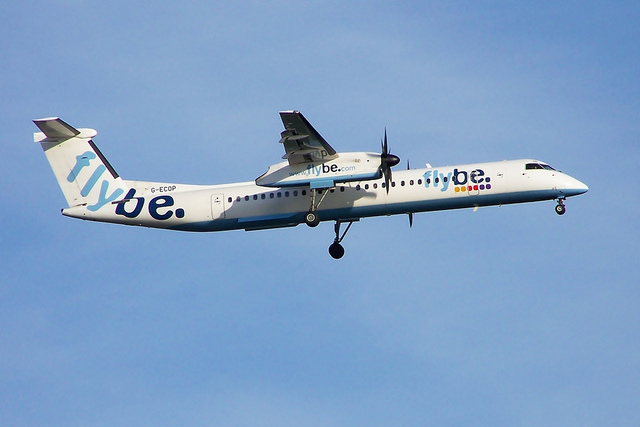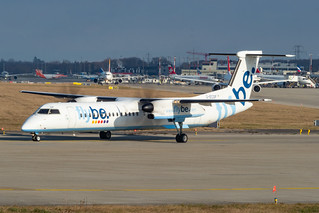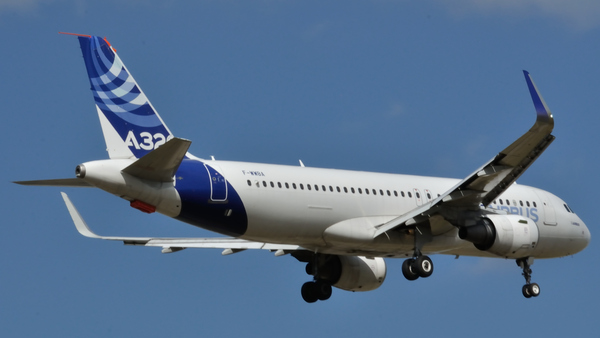Flybe DH8D near Dublin on Apr 27th 2016, incapacitated first officer interferes with flight controls
Last Update: January 20, 2017 / 16:15:23 GMT/Zulu time
Incident Facts
Date of incident
Apr 27, 2016
Classification
Report
Airline
Flybe
Flight number
BE-303
Departure
Exeter, United Kingdom
Destination
Dublin, Ireland
Aircraft Registration
G-ECOP
Aircraft Type
De Havilland Dash 8 (400)
ICAO Type Designator
DH8D
Ireland's AAIU released their final report commenting the occurrence:
The Co-pilot was probably under some stress on the morning of the flight considering that his young child had a hospital appointment the following day. Stress and lack of quality sleep may have been factors in his feeling unwell and incapacitation during the flight.
In this event the Co-pilot requested permission to leave the flight deck at a time when the flight crew’s workload began to increase at the commencement of descent. Before the Co-pilot could leave the flight deck, the Commander responded to an unexpected aircraft upset caused by an involuntary input from the Co-pilot as he became increasingly unwell.
Following the unexpected aircraft upset, the Commander reacted promptly and ensured that the aircraft was returned to a safe flight path. Only then did he realise that the Co-pilot was unresponsive and had become incapacitated.
As the Commander was already in communication with the SCCM, he considered the standard call to alert Cabin Crew was not required. The Crew reacted to the situation in an effective and co-ordinated manner, carried out the incapacitation drills and the CCM occupied the jump-seat for approach and landing. Notwithstanding a minor issue with a headset, there was good communication between the Commander and Cabin Crew. The Commander, assisted by the Cabin Crew, ensured that the Co-pilot was secure in his seat and away from the controls while the cabin was secured for the approach and landing with an ABP occupying the aft crew seat.
The situation was dealt with in an efficient manner by the Commander with good use of CRM by the Crew; in its own safety report the Operator commented that ‘the reaction by the rest of the crew was swift and effective and they should be commended for their calmness, initiative and attitude throughout the incident.’
The AAIU reported: "The remainder of the Crew were stood down from subsequent duties and positioned home to the UK later that day. The Co-pilot was kept in hospital overnight for observation before being released. It was determined that the Co-pilot suffered a brief loss of consciousness (syncope) due to a sudden drop in blood pressure. This condition can commonly occur in healthy people and recovery is normally prompt and without any persisting ill effects. At the time of writing, the Co-pilot had not yet returned to flying duties with the Operator."
Only in the synopsis (but not the factual portion) of the report the AAIU stated: "Before the Co-pilot left his seat, the Commander felt an unexpected aircraft upset in the form of a yaw and roll to the left. The Co-pilot, who had become incapacitated, had inadvertently made an input to the left rudder pedal."
Incident Facts
Date of incident
Apr 27, 2016
Classification
Report
Airline
Flybe
Flight number
BE-303
Departure
Exeter, United Kingdom
Destination
Dublin, Ireland
Aircraft Registration
G-ECOP
Aircraft Type
De Havilland Dash 8 (400)
ICAO Type Designator
DH8D
This article is published under license from Avherald.com. © of text by Avherald.com.
Article source
You can read 2 more free articles without a subscription.
Subscribe now and continue reading without any limits!
Read unlimited articles and receive our daily update briefing. Gain better insights into what is happening in commercial aviation safety.
Send tip
Support AeroInside by sending a small tip amount.
Related articles
Flybe DH8D at Glasgow on Aug 20th 2016, "suspected minor technical fault"
A Flybe de Havilland Dash 8-400, registration G-ECOP performing flight BE-1143 from Glasgow,SC to Jersey,CI (UK) with 50 passengers, was climbing out…
Flybe DH8D at Southampton on Jun 22nd 2012, flaps problem
A Flybe de Havilland Dash 8-400, registration G-ECOP performing flight BE-632 from Guernsey,CI to Southampton,EN (UK), was on approach to Southampton…
Flybe DH8D at Newquay on Nov 14th 2019, aileron cable broke
A Flybe de Havilland Dash 8-400, registration G-FLBE performing flight BE-2187 from Newquay,EN to London Heathrow,EN (UK) with 59 passengers and 4…
Flybe E195 at Exeter on Feb 28th 2019, rejected takeoff due to haze on board as result of maintenannce prompts evacuation
A Flybe Embraer ERJ-195, registration G-FBEJ performing flight BE-4321 from Exeter,EN (UK) to Alicante,SP (Spain) with 100 passengers and 5 crew, had…
Flybe DH8D near BIrmingham on Jul 22nd 2019, cabin pressure problems
A Flybe de Havilland Dash 8-400, registration G-PRPK performing flight BE-1331 from Edinburgh,SC to London City,EN (UK) with 56 passenges and 4 crew,…
Flybe DH8D near Manchester on Nov 22nd 2019, engine shut down in flight
A Flybe de Havilland Dash 8-400, registration G-ECOF performing flight BE-774 from Southampton,EN to Edinburgh,SC (UK) with 69 people on board, was…
Flybe DH8D near Exeter on Nov 15th 2018, altitude disagree
A Flybe de Havilland Dash 8-400, registration G-JECR performing flight BE-3501 from Exeter,EN (UK) to Paris Charles de Gaulle (France), was enroute…
Newest articles
Wizz UK A21N at Prague on Sep 11th 2025, tail strike on landing
A Wizz Air UK Airbus A321-200N, registration G-XLRA performing flight W9-5775 from London Gatwick,EN (UK) to Prague (Czech Republic), landed on…
PIA A320 at Lahore on Jan 17th 2025, landed on wrong runway
A PIA Pakistan International Airlines Airbus A320-200, registration AP-BON performing flight PK-150 from Dammam (Saudi Arabia) to Multan (Pakistan)…
Subscribe today
Are you researching aviation incidents? Get access to AeroInside Insights, unlimited read access and receive the daily newsletter.
Pick your plan and subscribePartner

ELITE Simulation Solutions is a leading global provider of Flight Simulation Training Devices, IFR training software as well as flight controls and related services. Find out more.
SafetyScan Pro provides streamlined access to thousands of aviation accident reports. Tailored for your safety management efforts. Book your demo today
AeroInside Blog
Popular aircraft
Airbus A320Boeing 737-800
Boeing 737-800 MAX
Popular airlines
American AirlinesUnited
Delta
Air Canada
Lufthansa
British Airways








